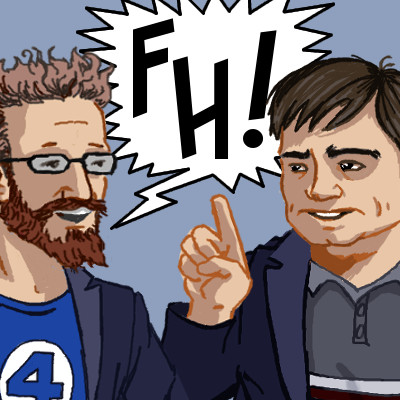Category: Specials
Using theme and motif can be a great way to allow readers to enjoy your story on another level. It can also help focus your writing and add to that all-important NaNoWriMo word count! This week we discuss what we mean by using theme and motif.
Ross’ Notes
- Notes will be coming when I’ve finished NaNo!
Act structure is something that everyone talks and has an opinion about, but is it actually helpful when you are writing your story? No. No, it’s not. But maybe sometimes it is. Allow me to unlock the doors of the prison called “Act Structure” for you. It’s up to you if you leave…
Ross’ Notes
- Notes will come once I’m clear of NaNoWriMo!
What was the first shared universe? The answer may be surprising (unless you listened to our last episode). Join us as we discuss the little-seen 1943 classic Frankenstein Meets The Wolf Man, as well as the following Universal Monster movies, and Ross compares Halloween as a kid in the US and the UK.
Ross’ Notes
- Check out Part One of our Halloween special here!
- I’m trying to reference Arsene Lupin Contra Sherlock Holmes, a lost silent film serial. Characters from different stories — or what we would call franchises or IPs (Intellectual Properties) had met each other before this movie, but these characters had not been previously established in their own movies, and thus would not qualify as the first shared universe as Wolf Man and Frankenstein did.
- The chronology of the Univseral Monster movies is from Wikipedia.
- Here’s the “Monkey Tennis” scene from I’m Alan Partridge, season 1, episode 1:
- The Mexican project that Lon Chaney, Jr. was a part of was Face of The Screaming Werewolf (1964).
- Below is a picture of me (left) and my brother, Halloween either 1988 or 1989. I’m in a homemade Ghostbusters uniform, and my brother is sporting a very Bela Lugosi-inspired Dracula outfit.

- It is fun finally being back in the States for Halloween, and I still enjoy making my costumes from scratch. And not just mine, either. This is what I did to my son last year:

Why are the Universal Horror Movies important and why should we still talk about them today? Because believe it or not, the Hollywood movie industry is still making billions upon billions using the storytelling models that this specific series of movies developed that were kicked off over 85 years ago. Come inside and listen… if you dare!
Ross’ Notes
- So… there’s going to be disagreement on exactly who is in the core cannon of the Universal Monster Movies. And that’s fine.
- Doing a little more digging, it looks like the books I remember are the Crestwood monster books (orange series). Our library had maybe five of them. Here’s a short, informative video about them:
- Much of my information comes from various special feature documentaries on DVDs that I own and that I borrowed from the library.
- Information on dates and chronology (the same thing) for Universal horror movies I lifted from Wikipedia here.
- Lon Chaney (Sr.) as The Hunchback in 1923:

- Yes, German expressionism. Probably worth an episode. Sometimes misapplied, but everyone agrees that The Cabinet of Dr Caligari (1920) by Robert Weine did it to the best effect. The pictures below are not from a dream sequence, but what the movie actually looks like, all the way through. The film stock was also hand-tinted in green, red, blue, and whatever in order to enhance/subvert the mood. Check out this insanity:

- Now compare to the Universal horror movies made in Hollywood a decade later. A little more sense of realism, but still a definite skewing of reality:



- M (1931) by Fritz Lang. Using a sound motif as a replacement for a character that is present, but unseen:
- Blackmail (1929) by Alfred Hitchcock. Watch this short scene, I think it’s one of the best in the history of cinema:
- Vampyre (1932) by Carl Th. Dreyer is a remarkably unsettling film using a lot of very basic techniques in very masterful ways:
- Boris Karloff’s real name was William Henry Pratt.
- Gods and Monsters (1998), dir. Bill Condon.
- The play Presumption; or, The Fate of Frankenstein was performed in 1832, 13 years after the book was published.
- The Invisible Man (1933), dir. James Whale. The “eaten away” scene:
- The definition of sequel is my own. But that’s what it is, right?
- The Hays Code was by no means comprehensive when it came into effect in 1930, but a crackdown, led by “popular opinion” was really ramped up in the mid-1930s.
The children now love luxury; they have bad manners, contempt for authority; they show disrespect for elders and love chatter in place of exercise. Children are now tyrants, not the servants of their households. They no longer rise when elders enter the room. They contradict their parents, chatter before company, gobble up dainties at the table, cross their legs, and tyrannize their teachers.
Attributed to Socrates (469–399 B.C.), by Plato quote from https://www.bartleby.com/73/195.html
- Christmas is around the corner! If you wanted to treat a loved one (or yourself, I’m not going to let on), then I recommend the boxed set below. It contains the Spanish version of Dracula as a bonus feature.






